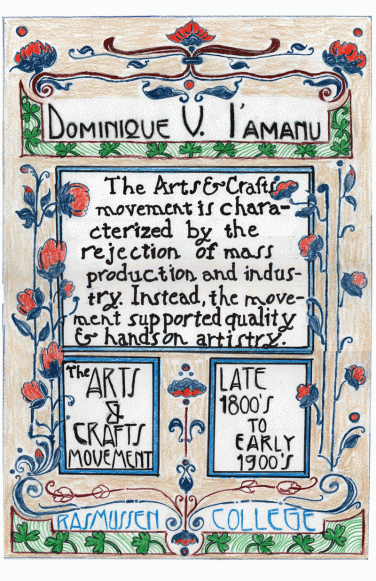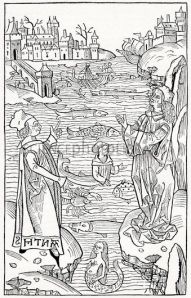The beginning of the twentieth century coincided with the advent and growth of the Modern Art Aesthetic. Listed below are some of the major movements of the time period (1900’s to 1930’s) that had a major impact on the direction of design, and still influence design today.
Cubism
Cubism was one of the first influences of modernism. This was an experimental art movement that looks at layout and space in new and innovative ways. Think Geometric Abstraction. Pablo Picasso was a major artist of this style as well as Fernand Leger. His work influenced new letterform compositions. Cubism was about questioning the status-quo and encouraging new ways of looking at space.

Futurism
Like Cubism, futurism was a new direction away from old thinking on aesthetics. It was not only an artistic movement,, it was also a social movement as well. Futurism sought to embrace a new and fantastic future. Futurism was about speed and mechanization, it embraced technology and high minded ideals. It influenced architecture, literature, film, and design as well as introducing creative type as typography took on new creative forms. An example of this new typography work can be seen in the work of Lewis Carroll, author of Alice’s Adventures in Wonderland.

Dadaism
Dadaism was a strong social stance. It was an avant-garde anti-war movement that was against the exploitation of the wage-earning class and even rejected forms of art. The work of this style challenged politics and was considered controversial for its social and political stances.
Dada pushed boundaries and was highly experimental. It was a heady influence on graphic design. The idea of photo manipulation was not necessarily new, but the Dadaists would push it in new, exciting directions such as John Heartfield’s work “Hitler Swallows gold and spouts junk”. Manipulating photos was not a new method by the time Dadaism came around but it did prove the power of photography and montages.

Surrealism
Surrealism came about at the beginning of the century and was inspired by Dada. It questioned the very nature of space and time. Some noteworthy contributors including Salvador Dali and René Magritte. Surrealist works dealt with the human psyche, dreams and human nature, often combining visual elements in unnatural ways. Frida Kahlo has often been called surrealist, in the way she combined the realistic with an otherworldly element. Surrealism as an art form is alive and well in todays art world.

Plakatstil
Plakatstil (German, “Poster Style”), was almost the antithesis to Surrealism. It embraced flat colors, minimalistic qualities and focused on layout and typography. with emphasis on the relationship between pictorial and typographic elements. A great example of this style is Lucian Bernhards “Poster for Priester Matches”. Note the flat, solid colors, contrast, and use of negative space. Compare this to the complex and colorful Art Nouveau which preceded Plakatstil and you get a sense of the giant shift that took place in terms of art and design and the minimalism that began to dominate.















